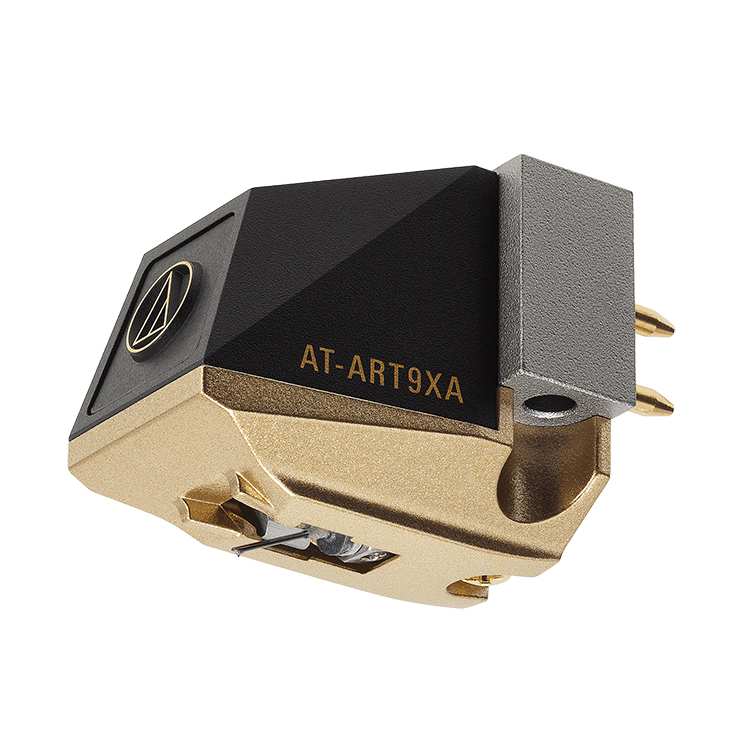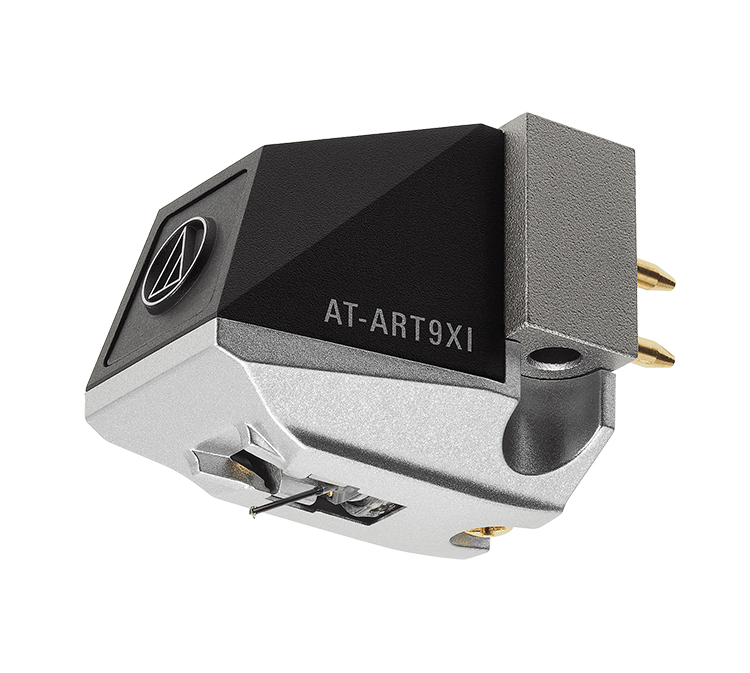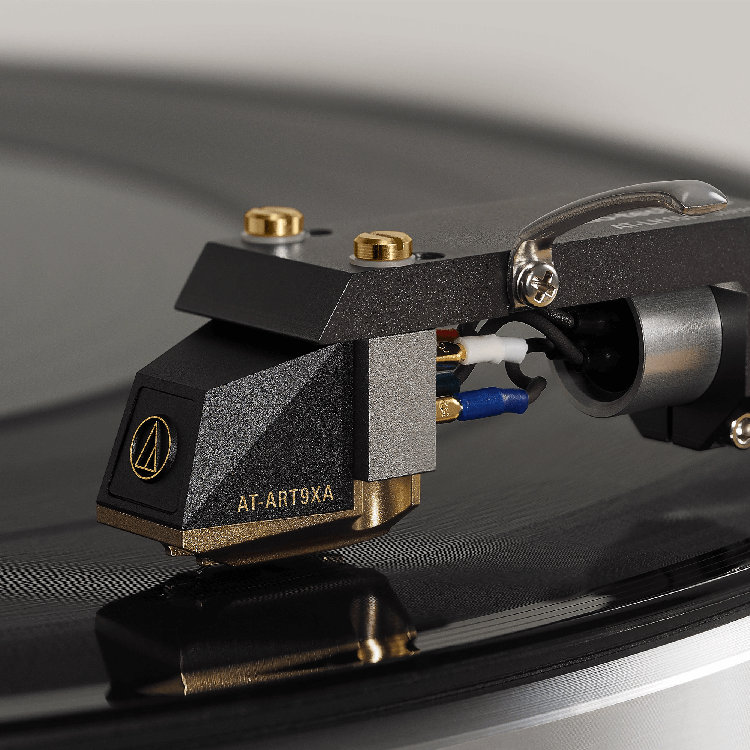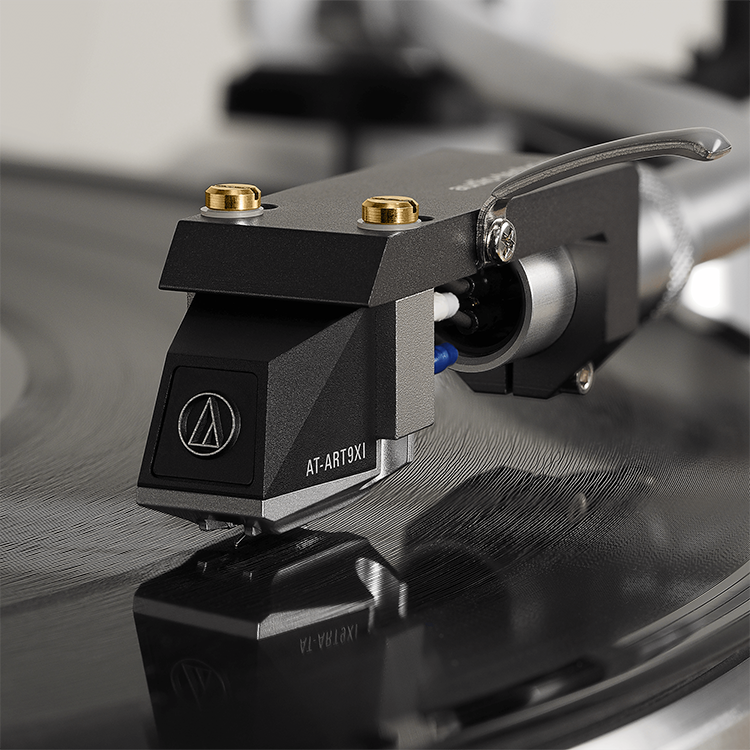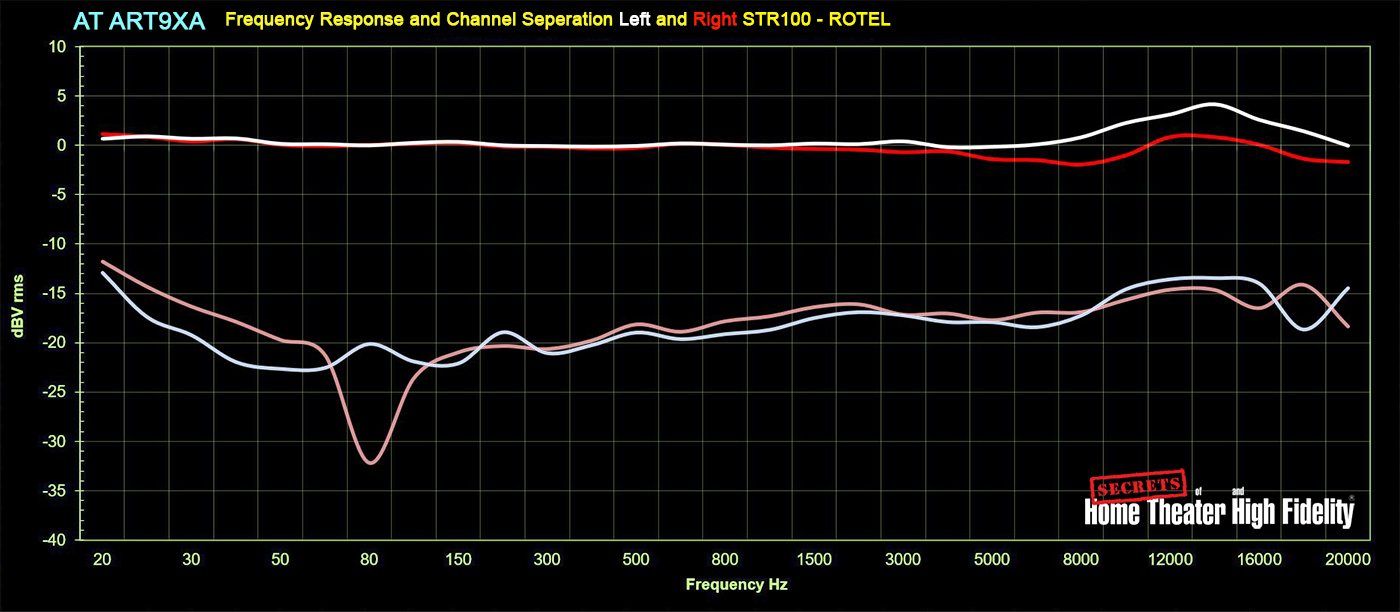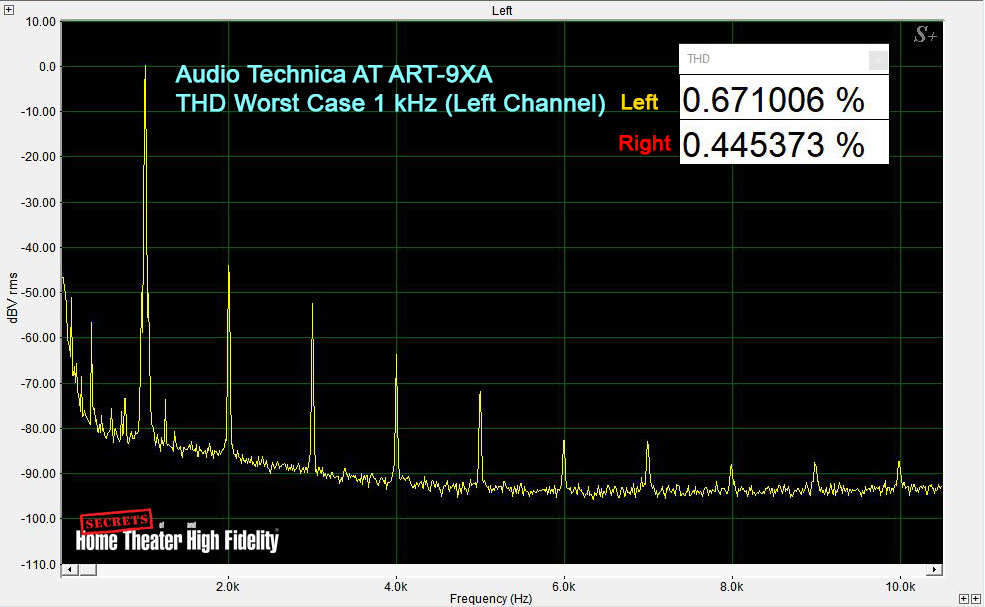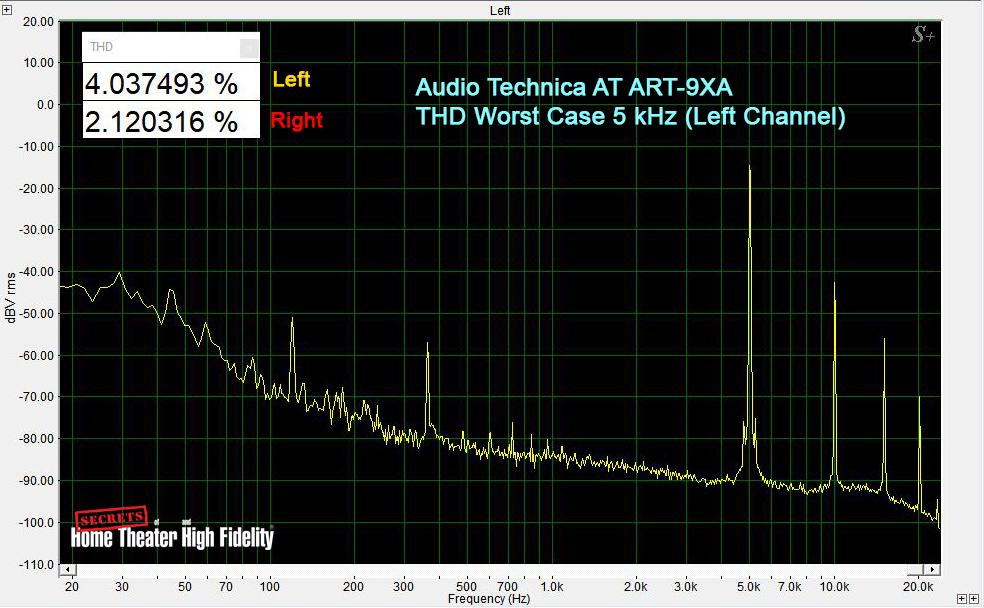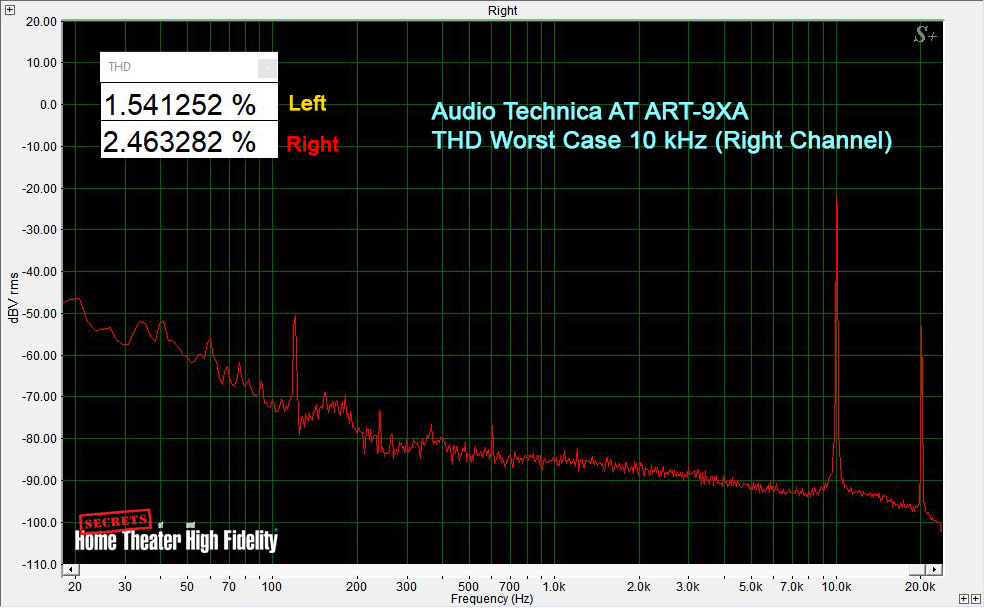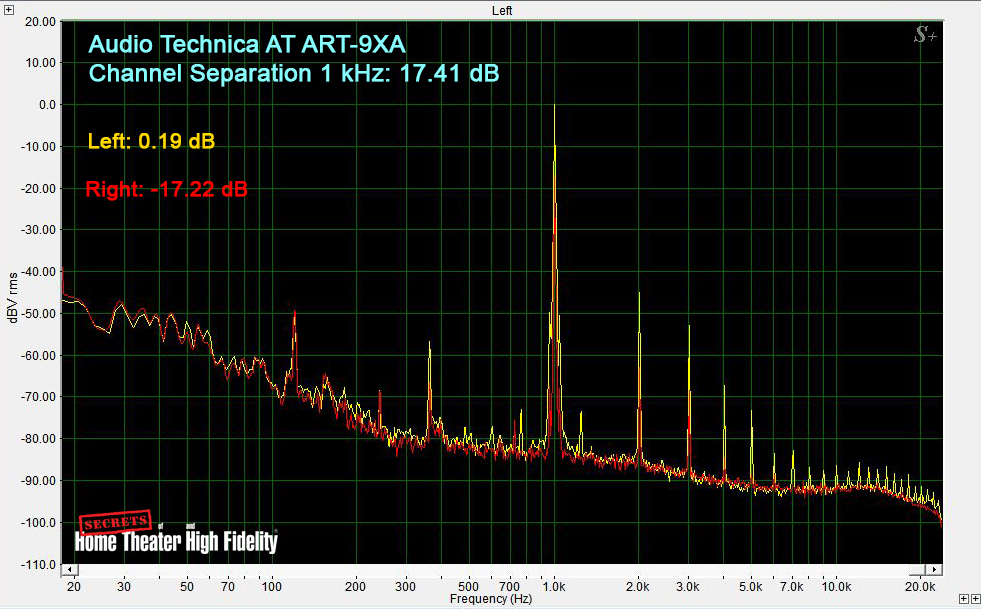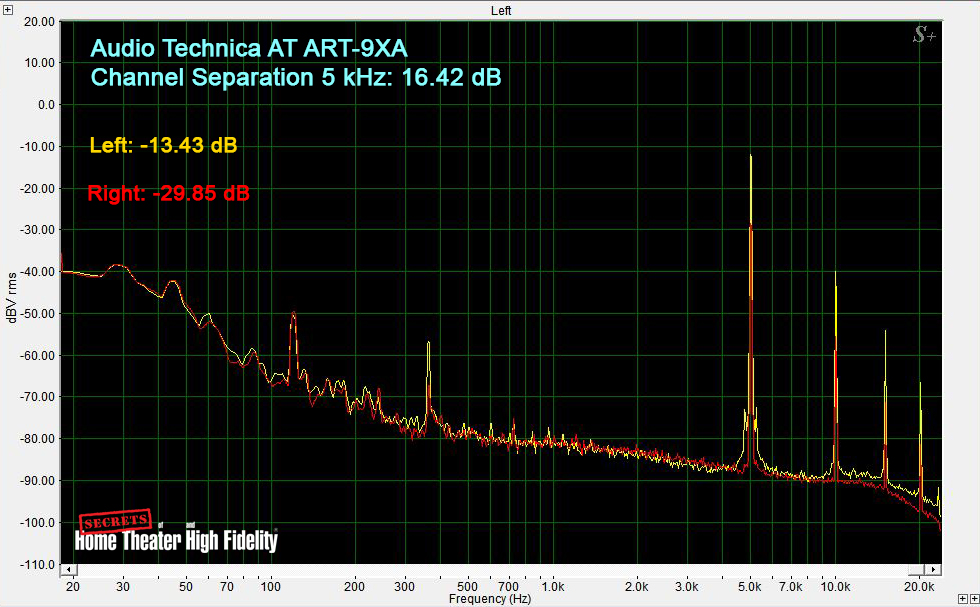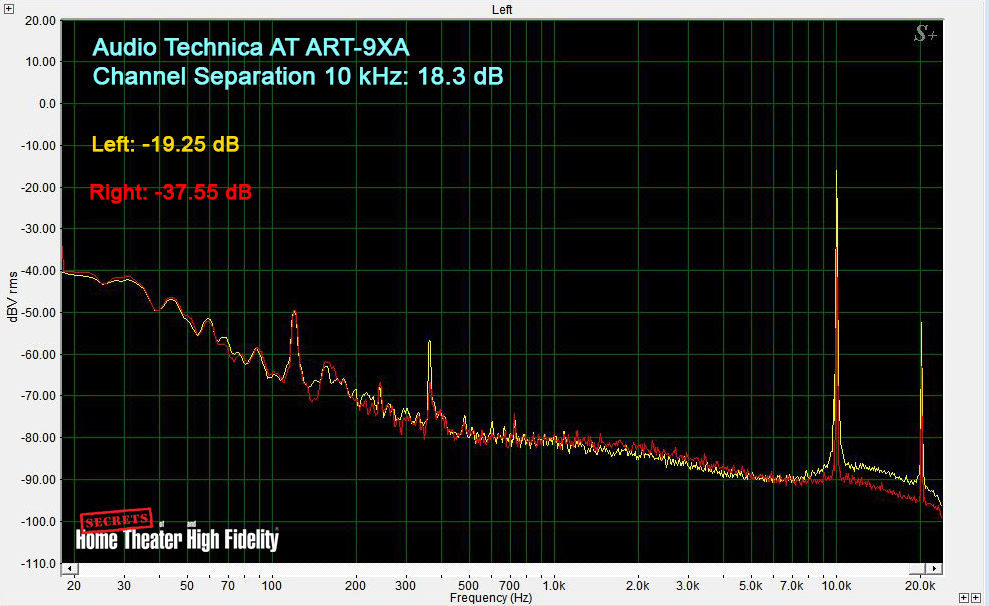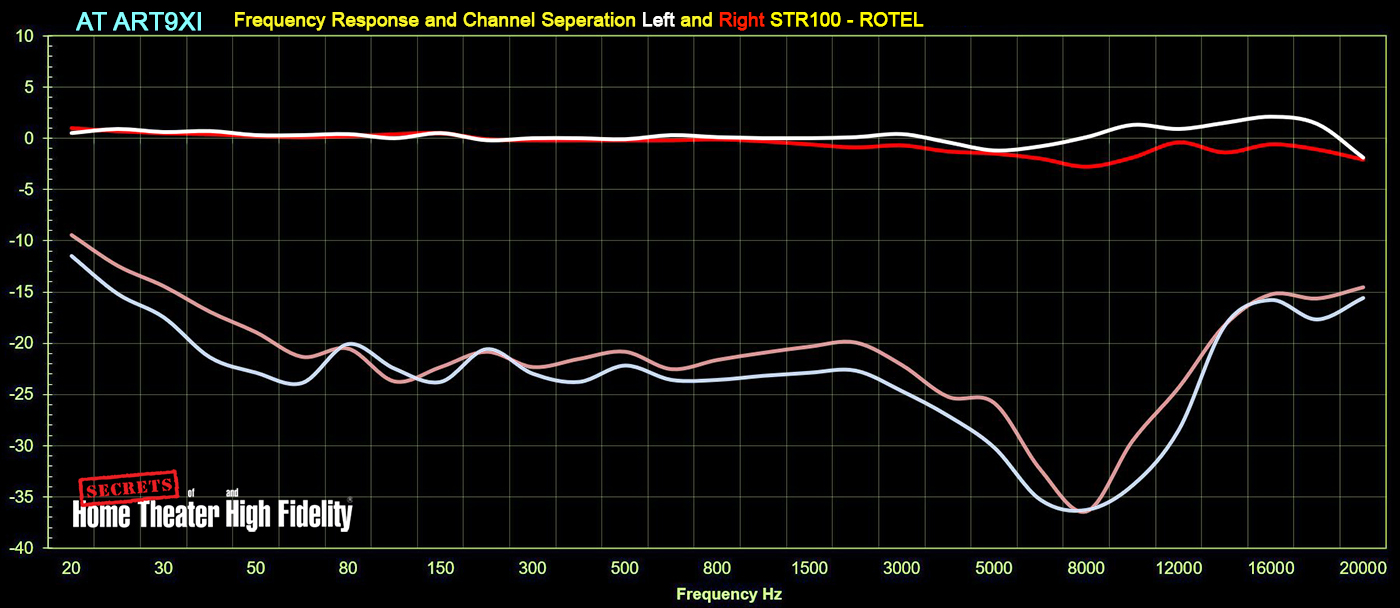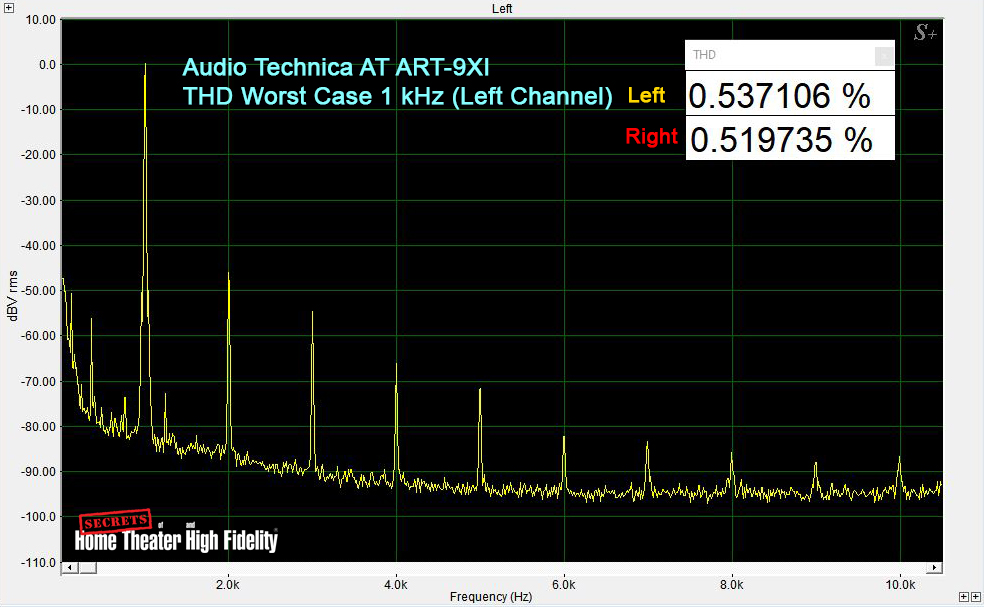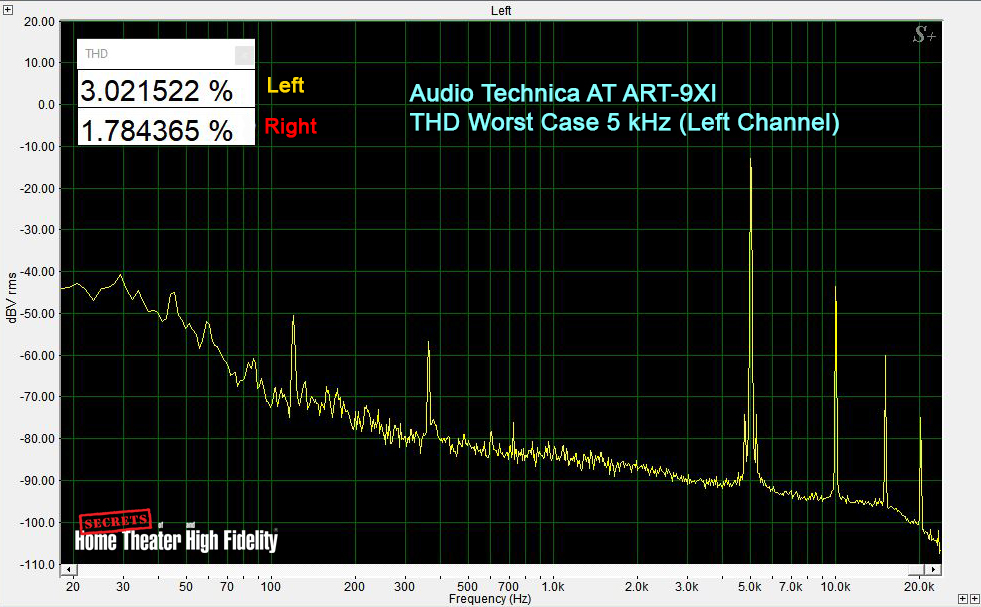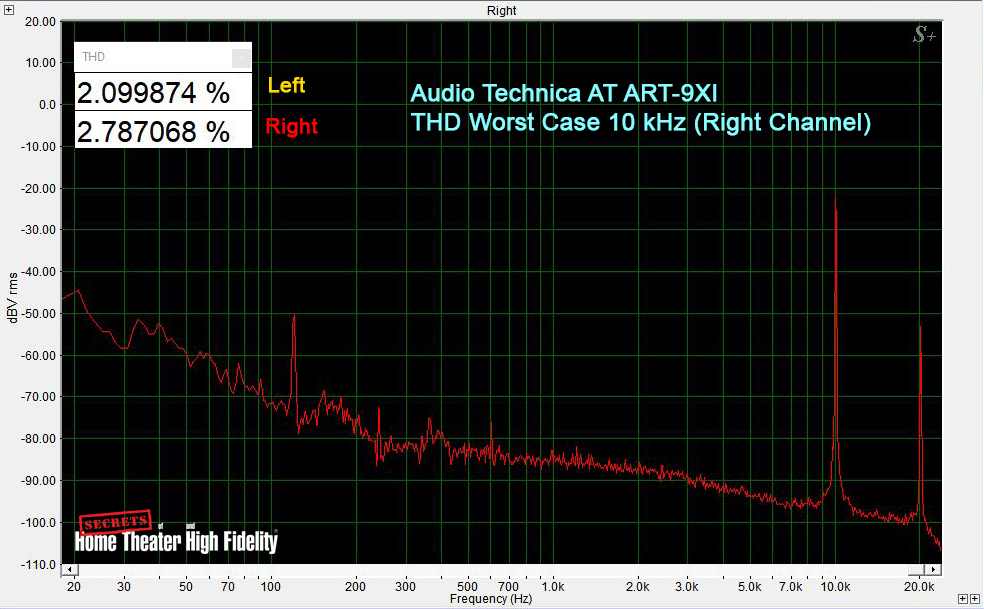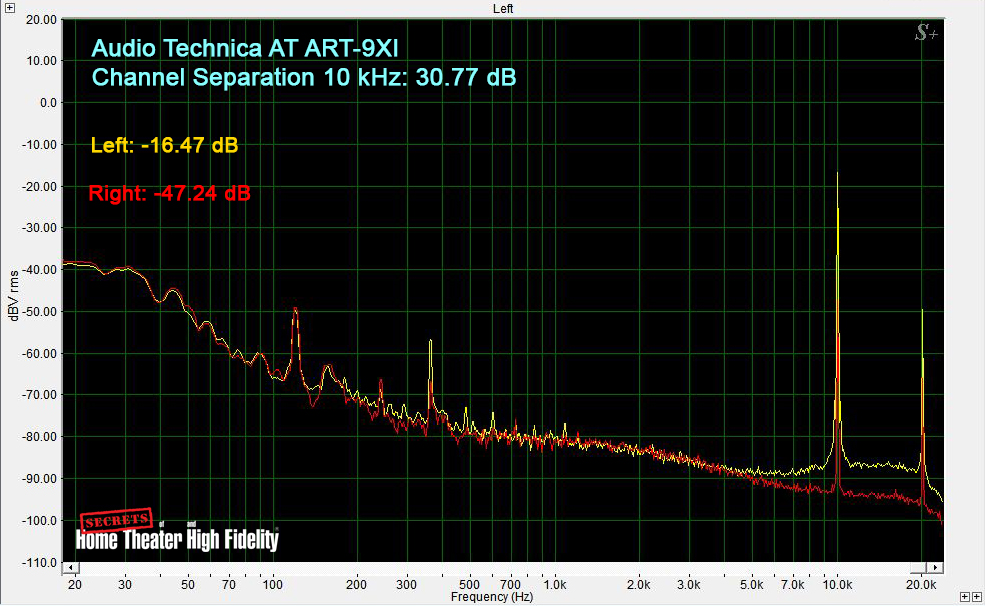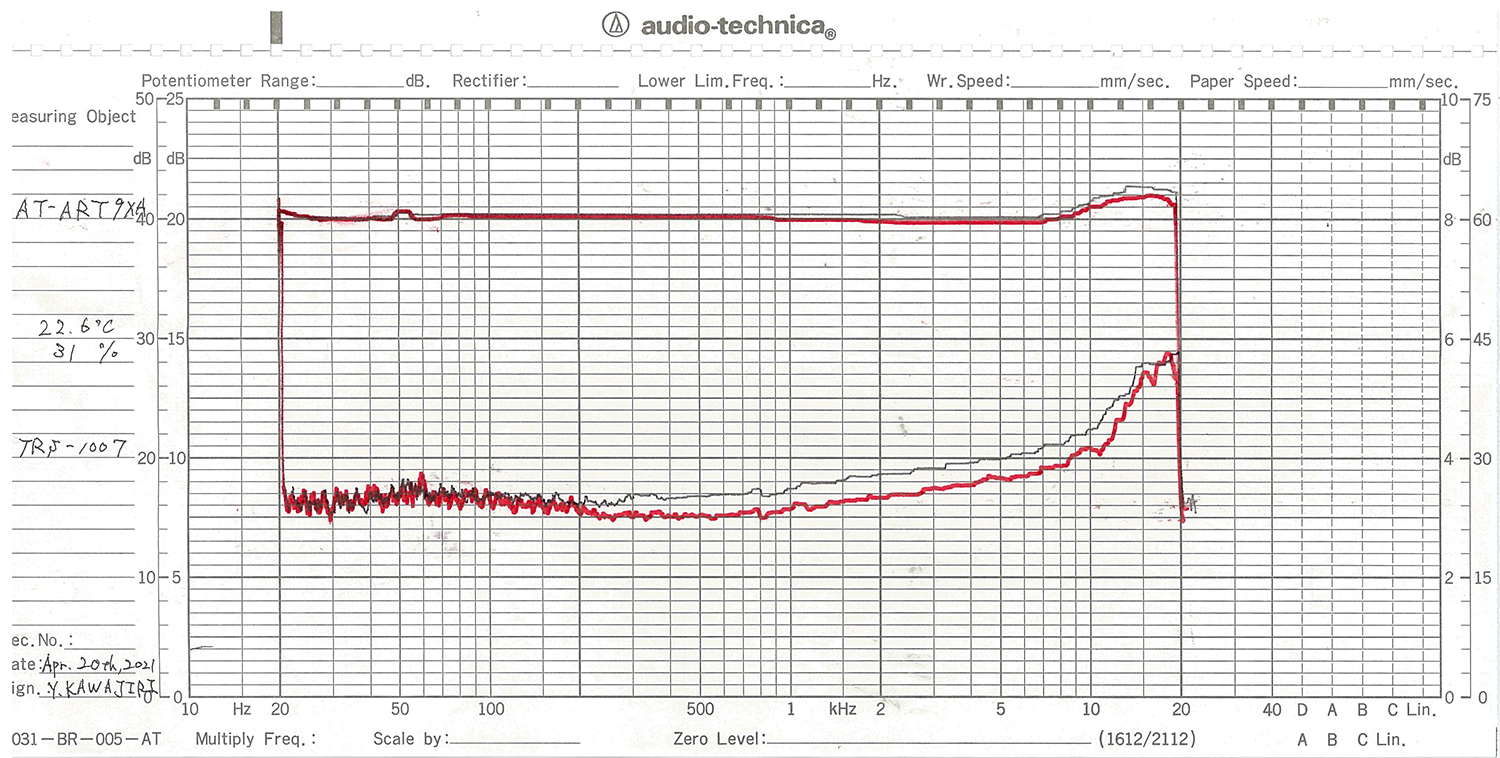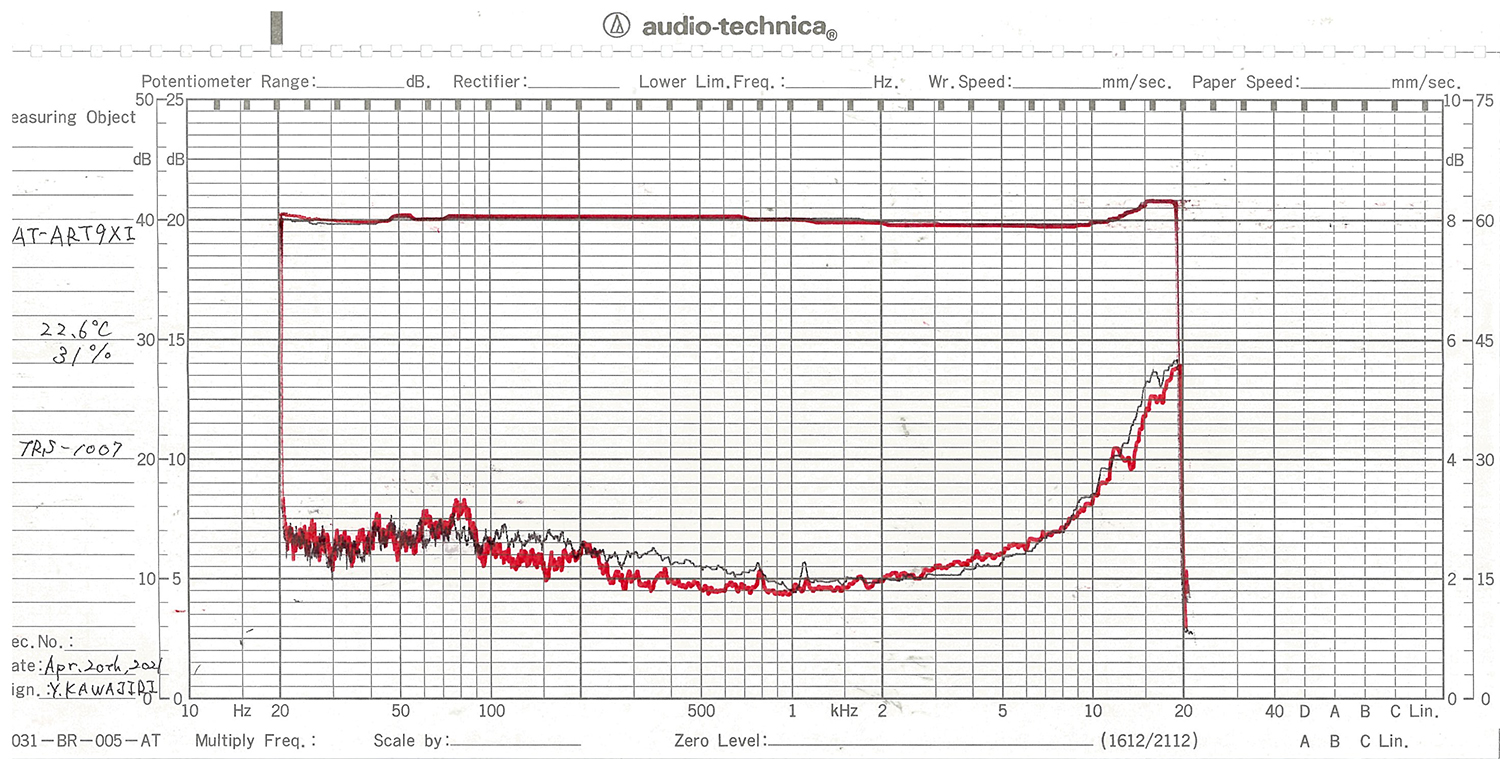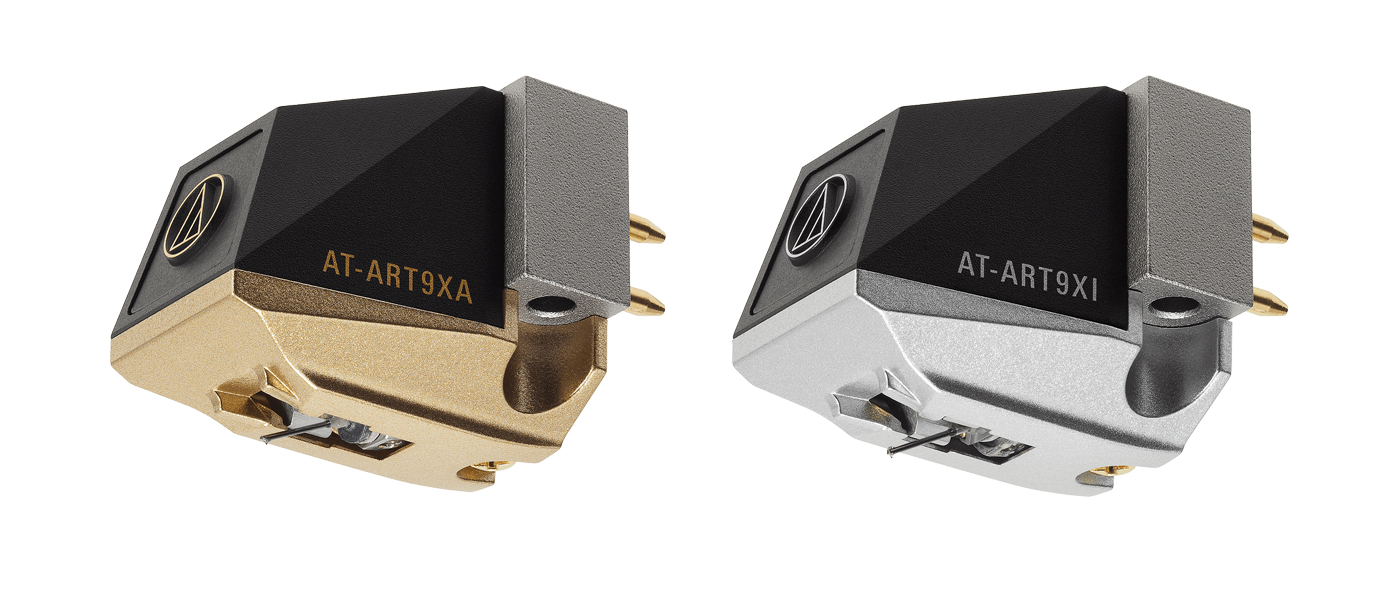
The lifelike realism of the AT-ART9XA and AT-ART9XI contributed to the best sound quality I’ve heard in my analog rig. All I wanted to do while I had them around was listen to records, leaving my digital setup to gather dust. It reaffirmed my opinion that well done analog sounds more real and more alive than anything digital.
Audio-Technica AT-ART9XA and AT-ART9XI Moving Coil Phono Cartridges
- Excellent dynamics, both micro and macro (particularly the AT-ART9XI)
- Very good top-end extension and air
- Superb realism and aliveness
- Excellent imaging, soundstage size, and depth
- Excellent fit and finish
Audio-Technica is a name that’s been around in audio for a long time. They’re very well known for headphones and microphones but have also made phono cartridges for decades. While most may be familiar with their more modestly priced moving magnet cartridges, this review covers their new moving coil AT-ART9XA and AT-ART9XI cartridges.
Secrets Sponsor
These new cartridges replace the old AT-ART9 and AT-ART7 moving coil units. Apart from their limited-edition AT-ART1000, these two cartridges are the top of the line for A-T. The XA is a very low output (0.2 mV) cartridge with a non-magnetic core in the motor system and a nude Shibata stylus. The XI does use a magnetic core in the motor and a nude special line contact stylus. This cartridge has a still low, but more manageable 0.5mV output. Other than those differences, the two cartridges are very similar.
I had a thoroughly enjoyable time listening to both, identifying their strengths and weaknesses, and in general enjoying my records more. These cartridges brought out a level of lifelike realism I had not yet heard in my system, one that sometimes made me wonder why I bother listening to digital music at all.
AT-ART9XA
Frequency Response:
20Hz-50 kHz
Output voltage:
0.2 mV (1 kHz, 5cm/s)
Channel Separation:
30 dB (1 kHz)
Output balance:
0.5 dB (1 kHz)
Tracking force:
1.6g-2.0g, 1.8g nominal
Coil impedance:
12 ohms at 1 kHz
DC resistance:
12 ohms
Recommended load impedance:
>100 ohms
Coil inductance:
2.5 uH (1 kHz)
Static compliance:
20×10-6 cm/dyne
Dynamic compliance:
10×10-6cm/dyne (100 Hz)
Stylus type:
Nude Shibata
Stylus curvature radius:
2.7 x 0.26 mil
Cantilever:
0.28mm solid boron
Vertical tracking angle:
20 degrees
Dimensions:
17.3mm x 16.8mm x 25.0mm
Mounting holes:
M2.6
Weight:
8.5g
MSRP:
$1290.00
AT-ART9XI
Frequency Response:
20Hz-50 kHz
Output voltage:
0.5 mV (1 kHz, 5cm/s)
Channel Separation:
30 dB (1 kHz)
Output balance:
0.5 dB (1 kHz)
Tracking force:
1.6g-2.0g, 1.8g nominal
Coil impedance:
12 ohms at 1 kHz
DC resistance:
12 ohms
Recommended load impedance:
>100 ohms
Coil inductance:
25 uH (1 kHz)
Static compliance:
20×10-6 cm/dyne
Dynamic compliance:
15×10-6 cm/dyne (100 Hz)
Stylus type:
Nude special line contact
Stylus curvature radius:
1.5 x 0.28 mil
Cantilever:
0.28mm solid boron
Vertical tracking angle:
20 degrees
Dimensions:
17.3mm x 16.8mm x 25.0mm
Mounting holes:
M2.6
Weight:
8.5g
MSRP:
$1290.00
Website:
Company Directory:
SECRETS Tags:
Audio-Technica, turntable, turntable accessories, AT-ART9XA, AT-ART9XI, Moving Coil Phono Cartridges, Phono Cartridges, review 2021
This is the second of my reviews where I rejuvenate my now 35-year-old Linn LP12 Valhalla turntable. Last time it was the fantastic Jelco TK-850s MKII tonearm, now an unobtainable unicorn thanks to the COVID-19 pandemic-induced demise of the Jelco company last year. No such chance with Audio-Technica, however! A-T is a large, diversified company with a range of 50 (yes 50!) different phono cartridges ranging from sub-$100 P-mount units for commodity turntables to the $5000 AT-ART1000 flagship unit.
The two models reviewed here MSRP for $1290 each. Other than the color, they look identical. Their differences are internal and hard to see. The XA has a non-magnetic motor core and a Shibata stylus, while the higher output XI has a magnetic motor core and a special line contact stylus. They have the same 0.28mm boron cantilever, and a very similar mechanical design.
A close look at the specifications also shows that the XI is slightly higher compliance than the XA. These are both moderate compliance cartridges that will work reasonably well with moderate effective mass tonearms. My Jelco has an effective mass of 13.4g, so these cartridges are a little on the soft side, but not terrible, with expected resonances (later confirmed with a test track) of 7-8 Hz. Something more like 10 Hz is ideal, but 7 Hz isn’t the end of the world.
The two cartridges were delivered in A-T headshells that were compatible with the quick disconnect on my tonearm. This allowed me to set both cartridges up and switch back and forth between them in seconds, which was ideal for the purposes of this review. Since the geometry of the two cartridges is the same, and they have the same 8.5g mass, no adjustments were required switching from one to the other.
I set the two cartridges up using the same USB microscope method used for the Jelco tonearm review. When I initially set the first cartridge up, I ended up with an unreasonably high tonearm height after setting the stylus rake angle to 92 degrees. I checked with A-T and found that this was not what I should be doing. The styli of these cartridges are ground to work optimally with a 20-degree cantilever angle, which results in a 90-degree SRA. When I reset to this value, the VTA on the tonearm looked more reasonable, and the sound was where I expected it to be.
I used the A-T recommended 1.8g tracking force, set with a Shure balance. This resulted in very good tracking without having to add much anti-skate, and I was happy with the sound so I didn’t mess with it.
When setting the overhang, I was very happy with the precise cartridge construction and well-engineered threaded holes with metal inserts. The only slightly annoying thing was that the sides of the cartridge when viewed from the top aren’t square, so I had to use the relatively narrow cartridge nose to compare to my protractor.
I was able to use the MC setting of my Rogue RP1 preamp (58 dB gain) for both cartridges. I had to use volume settings well past 50% on the dial for the lower output XA cartridge but didn’t have many problems. There was a little more noise from the preamp than I would like, but not so bad that I necessarily needed a higher gain phono preamp or step-up transformer. Even in complete silence, I could not hear a faint whisper of hiss at the listening position, but the noise was clearly audible with my ear next to the speaker.
The higher output XI cartridge was no problem. If I held my ear right up to the speaker, I could hear a little preamp noise, but at a significantly lower level. The gain difference needed to make up for the lower output of the XA over the XI is 8 dB, so my preamp was right on the edge in terms of noise for the lower output unit. Ideally, I think you’d want something with closer to 70 dB gain for the XA and 60 dB for the XI. I set loading to 1 kohm. A-T recommends loading of at least 100 ohms. I did a little experimenting but decided to limit variables and just leave the loading at 1k for the test as I was happy with what I got. But you can experiment to your heart’s content.
A-T recommended about 10 hours of break-in on the cartridges, so I withheld any of my critical listening for a while as I just spun some records.
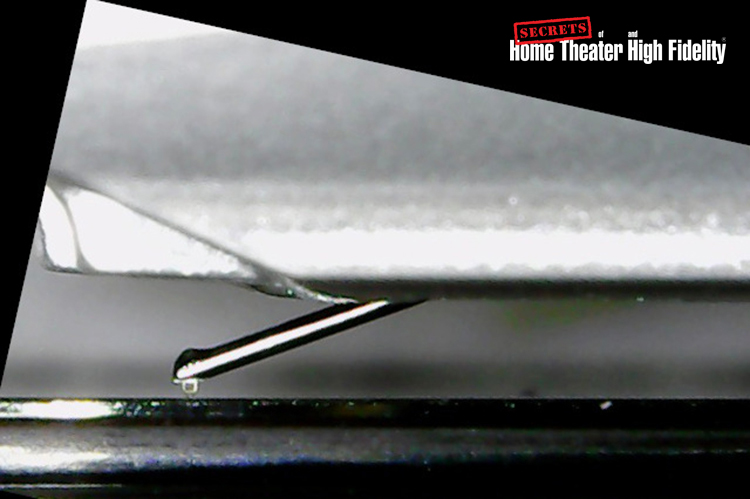
I don’t know about all of you, but the reason I listen to vinyl is because it sounds alive. Digital music is almost certainly more convenient and is closer to perfect in terms of objective measurements at least for high-res digital formats. But one place I have never heard digital best analog is the feeling of reality in the listening room. This is a hard concept to describe if you haven’t heard it. The best way I can describe it is that eerie feeling that for certain moments you are not listening to recorded music. You’re hearing real, live sound. No stereo system can do this all the time, but a well set-up vinyl rig pulls this trick off with far more regularity than anything digital in my experience. That feeling is what I’m chasing when setting up my turntable, and anything that gets me closer (that I can afford) is worth it. My Jelco tonearm was an upgrade that made a big difference on this score. And so do these Audio-Technica cartridges. I replaced a Grado Reference Platinum moving magnet cartridge for this test. This is an old cartridge, but a good one for the money. Both the XI and XA cartridges stomped all over the old Grado in every aspect, as you hope they would, given the price difference.
I’ll start with the AT-ART9XI. This higher output cartridge is likely to be more compatible with a typical system, and I found the sound to be the most well-rounded. This cartridge has excellent dynamics, both macro, and micro. I think that it’s the microdynamics performance of a good turntable system that contributes the most to that aliveness feeling, and the XI cartridge has that in spades.
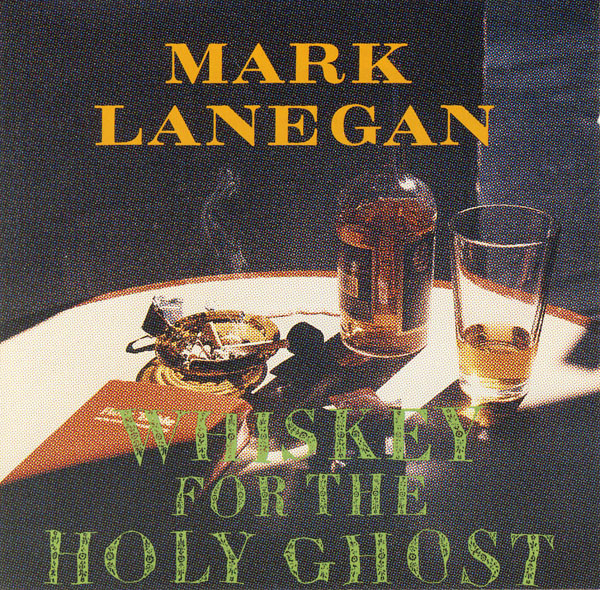
“Whiskey for the Holy Ghost”, Mark Lanegan
Listening to Mark Lanegan’s “Whiskey for the Holy Ghost”, the richness and texture of Lanegan’s baritone voice sent the proverbial chills up my spine when I first listened to it, and that continued every time I spun that record.

“Feast of Wire”, Calexico
The drive and energy of Calexico’s “Feast of Wire”, particularly my favorite track Güero Canelo made me want to listen to the record over and over again. I have that same album in digital. While it’s good, I had no desire to listen to it multiple times in a row in that format the same way I did with the record. Because of the excellent dynamic performance, the XI did excel with rock and jazz as the old ART9 was said to do.
However, I found the sound to be across the board excellent for all albums I tried. In terms of timbre and frequency extension, I found the XI to be a very natural-sounding cartridge, with particularly good top-end extension, sparkle, and air. The low end went deep, with a full measure of dynamic punch similar to the rest of the frequency range.
The AT-ART9XA is a significantly lower output cartridge that’s all about smoothness, delicacy, and detail. This is an excellent cartridge for acoustic vocals, classical music, and small group jazz. It does not have the same macrodynamic punch as the XI. Not to say the dynamics are bad. The microdynamics are at least as good, if not better, but the sharpness of big dynamic contrasts are smoothed off a bit compared to the higher output cartridge.
Detail retrieval is a little better than the XI, but truth be told neither of these cartridges are champs in that regard, as I’ll discuss later. The smoothness, and ease it presented classical music, like Beethoven’s 5th Symphony on my vintage Deutsche Grammophon recording from my 17 box 85 record complete boxed set of Beethoven’s works, was fantastic. The level of ease, space, scale, and smoothness was unmatched for my system.
I found the timbre and frequency extension to be quite similar in nature to the XI. The top end was just as extended and airy but called a bit less attention to itself because of the smoother dynamic presentation. I thought the low end had slightly better extension and depth but at the expense of the dynamic impact delivered by the higher output cartridge.
Listening to more energetic jazz and rock worked just fine with the XA. The improved detail and vocal smoothness were welcome, but in the end, I preferred the dynamics of the XI for that material. I was always wondering how much of this was solely due to the low output. My phono preamp really did not have the gain I would want with the XA, and the audible noise level was a little more than I would have liked. I was not able to test with a higher gain phono preamp or step-up transformer. If you do have more gain in your preamp, carefully listening to the XA would be worth a try.
Both cartridges offered very good imaging performance, with big, wide soundstages. Their images were less pinpoint than with most digital systems, but no less precise or realistic. The sense of size to each image, as opposed to laser-sharp point-like focus, added to the realism of the presentation. Both cartridges also had very good depth presentation.
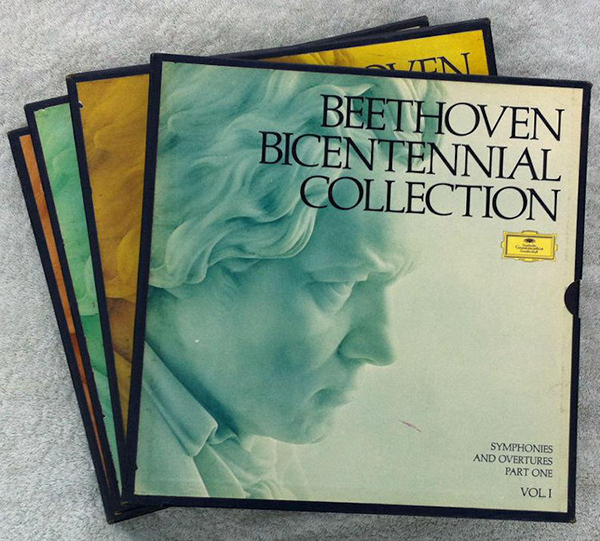
Beethoven Bicentennial Collection
As far as downsides go with the sound, there was only one that was a characteristic of both cartridges. Detail extraction was not the best I have heard. The low output XA was a bit better than the XI here, but both cartridges suffered a bit compared to the best. The limitations in detail extraction muddled some of the imaging performance, making it more difficult than I would like to focus on individual images in the soundstage. Here, my digital setup did significantly better than either of the two cartridges with the analog setup.
As we’ll see in the measurements section, the crosstalk performance of these two cartridges did not meet the manufacturer’s spec when we measured them, which could contribute to some limitations on detail extraction. This is an area where the performance could be improved. Of course, some of this limitation could of course come from the rest of my analog rig, but some is due to the cartridges.
Regardless, I definitely preferred listening to these cartridges over my very good Chord Audio based digital setup. I have “Whiskey for the Holy Ghost” in 24/96. It sounds excellent in digital. But while the A-T cartridges were in my system I never once chose to listen to the digital recording instead of the record. That’s really the final verdict.
Bench Tests and Analysis by Carlo Lo Raso
Benchmarks were obtained by using a Technics SL1200 Mk 6 turntable, which has been modified and rewired by KAB Electroacoustics, as a testbed. The CBS Technical Labs (STR 100) test LP was used for frequency response, channel separation, and distortion at the standard recording level of 5μm/ sec groove velocity.
The output from the phono stage was recorded digitally at 24-bit 48 kHz (to minimize groove wear on the test LPs) on a TASCAM HD-P2 digital recorder. Those results were analyzed on my computer using SpectraPLUS audio measurement software via the Lynx TWO B professional sound card. The Rotel RQ-970BX phono preamp was used for all these tests.
The ART9XA and ART9XI are part of Audio-Technica’s top-tier “ART” line of cartridges, both slotting in just under the flagship ART1000. In general, both are Moving Coil designs with each using a solid boron cantilever. The XA has a non-magnetic core while the XI has a magnetic core, otherwise, the main visible difference is in the diamond tip. The ART9XA uses a nude Shibata stylus tip shape while the ART9XI goes with a nude Special Line Contact tip shape. The ART9XI also has a slightly higher output voltage at 0.5mV versus the 0.2mV of the ART9XA.
Both cartridges were tested at the recommended vertical tracking force of 1.8 grams.
Looking at the frequency response and channel separation plot above, the ART9XA is very flat to 4kHz, after which the channels begin to show some response deviation. The left channel remains relatively flat to 6kHz and then begins a gradual rise to a worst-case peak of about +4dB at 14kHz. After that, it has an almost mirrored gradual decline back down to 0dB at 20 kHz. The right channel begins to deviate from flat a little before 4kHz and goes in the opposite direction coming to a worst-case right channel dip of -2dB at 8kHz. It then changes direction and heads to a +1.5dB peak at 12-13kHz, dropping again to a -1.5 dB dip at 20kHz. There remains a roughly 2-3dB separation between right and left channel response from 7kHz to 20kHz. We’ve encountered this upper-end response bump in some other Audio-Technica moving magnet cartridges we’ve reviewed but less so on the moving coil samples.
Channel separation components seem to follow each other fairly closely throughout the frequency range although there is a disappointingly low level of separation from the main frequency response. Below 100Hz results should be taken with a grain of salt however as the turntable rumble, groove noise and AC hum spurs exceed the crosstalk level.
Worst-case 1kHz THD is found in the left channel at 0.67%.
At 5kHz the worst-case THD is also found in the left channel at 4.0%.
At 10kHz the worst-case THD moves to the right channel at 2.46%.
The 1kHz channel separation of our test sample comes in at 17.41dB which is well below the claimed 30dB spec.
At 5kHz, the channel separation of our test sample is 16.42dB.
The channel separation at 10kHz clocks in at 18.30dB.
Turning to the frequency response and channel separation plot for the ART9XI, we still see a rise in the upper-end response of the left channel although not as pronounced as it was in the ART9XA. Again, we see the left channel response is very flat to 4kHz, after which there is a -2dB dip at 5kHz, moving to a +1.5dB peak at 10kHz and then a worst-case +2dB peak at 16kHz and finally dropping down to -2dB at 20kHz. The right channel begins to slightly deviate from flat at 1.5kHz, gradually dropping to a worst-case -2.5dB at 8kHz and then rising to a -0.5dB at 12kHz, dropping slightly again to -1.5 dB at 14 kHz and, after another minor bump up at 16kHz, finishes at -2dB down at 20kHz. There remains a roughly 2-3dB separation between right and left channel response from 9kHz to 18kHz.
Channel separation components seem to follow each other fairly closely once again throughout the frequency range and, this time, there is a higher level of separation from the main frequency response. As before, below 100Hz results should be taken lightly as the turntable rumble, groove noise and AC hum spurs exceed the crosstalk level.
Worst-case 1kHz THD is found in the left channel at 0.54%.
At 5kHz the worst-case THD is also found in the left channel at 3.02%.
At 10kHz the worst-case THD moves to the right channel at 2.79%.
The 1kHz channel separation of our test sample comes in at 21.38dB which is 8.5dB below the claimed 30dB spec.
At 5kHz, the channel separation of our test sample is 24.91dB.
The channel separation at 10kHz clocks in at 30.77dB.
It should be noted that Audio-Technica takes issue with our use of the STR-100 test LP for our tests. They feel that it doesn’t provide accurate frequency response and channel separation results due to the way the master was cut. We have had consistent results using the STR-100 when compared to other published tests we have found. In any event, Audio-Technica provided us with test results from their own samples of the ART9XA and ART9XI respectively.
Audio-Technica frequency response and channel separation test results of the ART9XA cartridge.
Audio-Technica frequency response and channel separation test results of the ART9XI cartridge.
The AT-ART9XI and AT-ART9XA are not cheap at $1290 MSRP and have a lot of good competition at that price point. I think their pricing is eminently fair given their performance, but not necessarily a bargain. Their fit and finish befit their price as well as the sound.
- Excellent “aliveness” in the sound, best I’ve heard in my listening room.
- Superb microdynamics.
- AT-ART9XA has fantastic macrodynamic punch.
- AT-ART9XI is super smooth and relaxed.
- Better measured performance, particularly crosstalk
- Improved detail extraction
I very much enjoyed my time with these two cartridges. The most important endorsement I can give them is that while they were in my system, I don’t think I listened to digital music on my home stereo system at all. I exclusively spun records and couldn’t wait to listen to more of them. My digital audio experience was limited to my desk at work, and I just wanted to get back to the turntable. Audio components that can do that are worth your trouble and your money.
Secrets Sponsor
For me, my musical tastes and my system, the higher output and more dynamic AT-ART9XI was the best fit. However, if you have some gain in your phono preamp and your listening tastes tend more to the acoustic and classical end of the spectrum, the AT-ART9XA could be an excellent choice.



